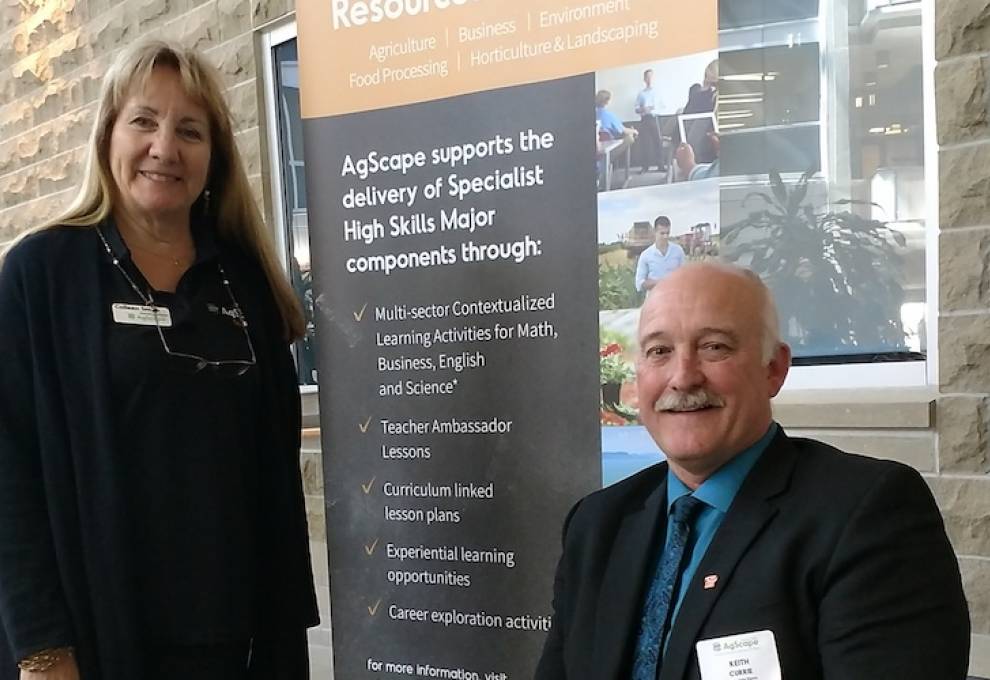
Imagine a scenario where urban kids actually want to learn about agriculture...but there’s no one to teach them.
Unfortunately, that situation exists daily in Ontario class- rooms. Despite everything we hear about disinterest in schools about farming, food and nutrition, requests from schools for classroom teacher ambassadors to give lessons about agriculture are being turning down, because of limited human resources to deliver them.
But as I learned during a prelude to the 2017 annual meeting of AgScape held at the University of Guelph last month, there’s some hope on the horizon. With support from the Ontario Ministry of Agriculture, Food and Rural Affairs (OMAFRA), plans are underway to have up to 50 ag in the classroom teacher ambassadors trained and available by 2018-19. That’s about twice as many as there are now. And that’s good news.
AgScape, formerly known as Ontario Agri-Food Education Inc., connects underemployed teachers with regular classroom teachers, to help teach agriculture and food lessons. It changed its name last year to AgScape -- an amalgam of agriculture and landscape – because it wanted to convey a broader message that included food. The agricultural landscape includes food. Thus, AgScape.
It’s also changing the way it trains teachers. It’s raising funds ($375,000) for a program it calls the Business of Food, an online training platform for teachers who can deliver ag and food lessons. It will be an on-line course that will be accessed through a secure portal on the AgScape website.
The Business of Food initiative would replace onsite training. The organization has traditionally trained teachers in small numbers, about two or three at a time, usually at its headquarters in Milton. But that’s not resource effective. For example, if someone wants to take the training soon after the organization had completed a training course, they had to wait until the next in-person course becomes available.
The teacher ambassador program is exclusive to grades 7 through 12. All trained teacher ambassadors will be able to teach lessons on topics that the farming community wants young people to know about: local food, food security, food safety, economics, agriculture in Canada, organics, livestock production, climate change, environment initiatives, biotechnology, technology and innovation, and careers.
In fact, all lessons contain a career component, designed to ultimately help fill the chronic shortage of qualified personnel in the agri-food sector. AgScape teachers are paid supply-teacher rates for as long as they're in the school. In-class time can range from about an hour (to teach one lesson) to all day, when teaching multiple classes or lessons.
In 2016, teacher ambassadors had class time with more than 3,000 students in 38 schools, covered by 17 school boards. They delivered 130 lessons. But with additional support, they could have done more. AgScape receives core funding for many of its initiatives from OMAFRA. That said, this core support represents only about one-third of their overall budgetary needs. It still relies heavily on industry support to operate. Many organizations are trying to reach youth, in assorted ways. Everyone has their role. But AgScape is the key to getting into schools, with honest agriculture info.
“We have no agenda except to provide accurate, balanced, curriculum-linked information to students via our trained teacher ambassadors and other initiatives,” says Colleen Smith, AgScape executive director. “We are proponents of healthy food choices, a balanced perspective on many ag-related hot-button issues, and ag-career information.”
The more facts students know about agriculture and food, the better choices they can make when it comes to their sources of nutrition. There’s a huge gap there right now, and this boost in classroom teacher ambassadors is one measure that can help fill it.

Add new comment